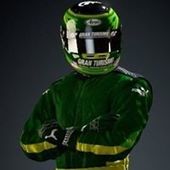Hi fellow game devs,
First, I would like to apologize for the wall of text.
As you may notice I have been digging in vehicle simulation for some times now through my clutch question posts. And thanks to the generous help of you guys, especially @CombatWombat I have finished my clutch model (Really CombatWombat you deserve much more than a post upvote, I would buy you a drink if I could ha ha).
Now the final piece in my vehicle physic model is the differential. For now I have an open-differential model working quite well by just outputting torque 50-50 to left and right wheel. Now I would like to implement a Limited Slip Differential. I have very limited knowledge about LSD, and what I know about LSD is through readings on racer.nl documentation, watching Youtube videos, and playing around with games like Assetto Corsa and Project Cars. So this is what I understand so far:
- The LSD acts like an open-diff when there is no torque from engine applied to the input shaft of the diff. However, in clutch-type LSD there is still an amount of binding between the left and right wheel due to preload spring.
- When there is torque to the input shaft (on power and off power in 2 ways LSD), in ramp LSD, the ramp will push the clutch patch together, creating binding force. The amount of binding force depends on the amount of clutch patch and ramp angle, so the diff will not completely locked up and there is still difference in wheel speed between left and right wheel, but when the locking force is enough the diff will lock.
- There also something I'm not sure is the amount of torque ratio based on road resistance torque (rolling resistance I guess)., but since I cannot extract rolling resistance from the tire model I'm using (Unity wheelCollider), I think I would not use this approach. Instead I'm going to use the speed difference in left and right wheel, similar to torsen diff. Below is my rough model with the clutch type LSD:
speedDiff = leftWheelSpeed - rightWheelSpeed;
//torque to differential input shaft.
//first treat the diff as an open diff with equal torque to both wheels
inputTorque = gearBoxTorque * 0.5f;
//then modify torque to each wheel based on wheel speed difference
//the difference in torque depends on speed difference, throttleInput (on/off power)
//amount of locking force wanted at different amount of speed difference,
//and preload force
//torque to left wheel
leftWheelTorque = inputTorque - (speedDiff * preLoadForce + lockingForce * throttleInput);
//torque to right wheel
rightWheelTorque = inputTorque + (speedDiff * preLoadForce + lockingForce * throttleInput);I'm putting throttle input in because from what I've read the amount of locking also depends on the amount of throttle input (harder throttle -> higher torque input -> stronger locking). The model is nowhere near good, so please jump in and correct me.
Also I have a few questions:
- In torsen/geared LSD, is it correct that the diff actually never lock but only split torque based on bias ratio, which also based on speed difference between wheels? And does the bias only happen when the speed difference reaches the ratio (say 2:1 or 3:1) and below that it will act like an open diff, which basically like an open diff with an if statement to switch state?
- Is it correct that the amount of locking force in clutch LSD depends on amount of input torque? If so, what is the threshold of the input torque to "activate" the diff (start splitting torque)? How can I get the amount of torque bias ratio (in wheelTorque = inputTorque * biasRatio) based on the speed difference or rolling resistance at wheel?
- Is the speed at the input shaft of the diff always equals to the average speed of 2 wheels ie (left + right) / 2?
Please help me out with this. I haven't found any topic about this yet on gamedev, and this is my final piece of the puzzle. Thank you guys very very much.









